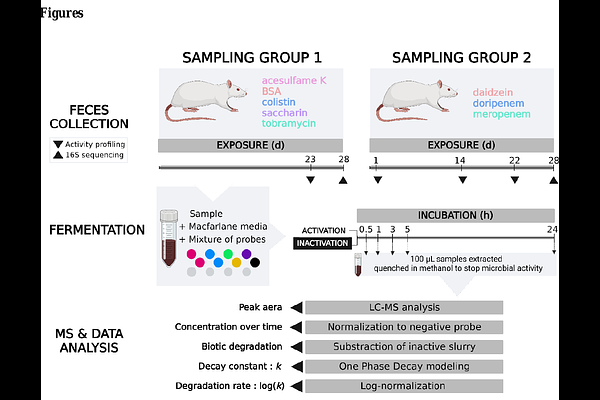Chemical activity profiling reveals how exposure to drugs or dietary compounds alters gut microbial biotransformation capacity

Chemical activity profiling reveals how exposure to drugs or dietary compounds alters gut microbial biotransformation capacity
Bigonne, H.; Zhai, S.; Folz, J.; Hurley, K.; Murali, A.; Zickgraf, F. M.; Kamp, H.; van Ravenzwaay, B.; Aichinger, G.; Sturla, S. J.
AbstractThe gut microbiome catalyzes biotransformation reactions that influence intestinal absorption as a basis of microbiome-host interactions. A better understanding of microbiota biotransformation capacity, and its alteration in dysregulated states, would enable the prediction of individual responses to drugs and toxins and improve safety assessment. Here, we profiled chemical activities in rat gut microbiota ex vivo, and quantified biotransformation capacity changes induced by oral exposure to eight drugs and dietary compounds: tobramycin, colistin, acesulfame potassium, saccharin, bovine serum albumin (BSA), meropenem, doripenem, and daidzein. We implemented an approach involving inoculation with metabolic probes during microbiota fermentations and measured their degradation. In most exposure groups, we observed no alteration of microbiota biotransformation capacity, however, we detected significant alterations in biotransformation rates after exposure to meropenem, doripenem and tobramycin. Interestingly, common patterns of biotransformation capacity were observed in the gut microbiomes from rats exposed to carbapenems and partially shared in microbiomes exposed to tobramycin. These results aligned well with prior metagenomic and metabolomic findings. Further, correlations between microbial taxa and reaction rates were assessed to establish a link between specific bacteria and probe degradation. This functionally relevant strategy revealed alterations of microbiota biotransformation capacity, as induced by in vivo exposures.